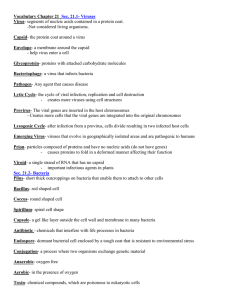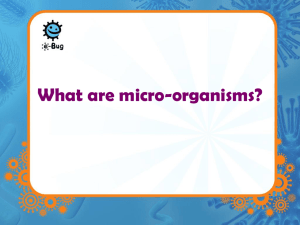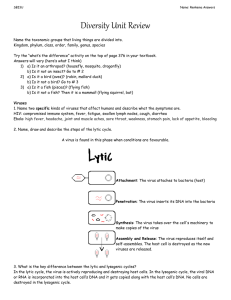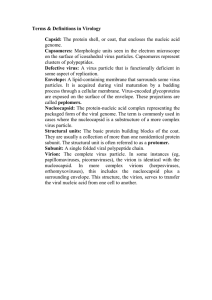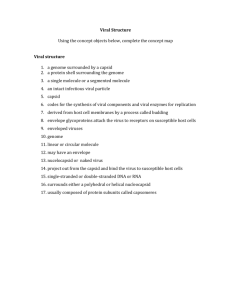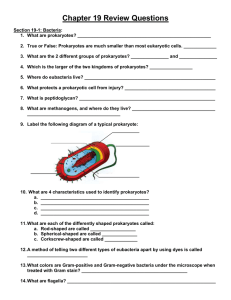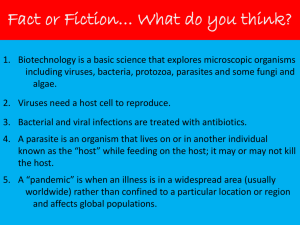Unit 3 Topics for Test
advertisement
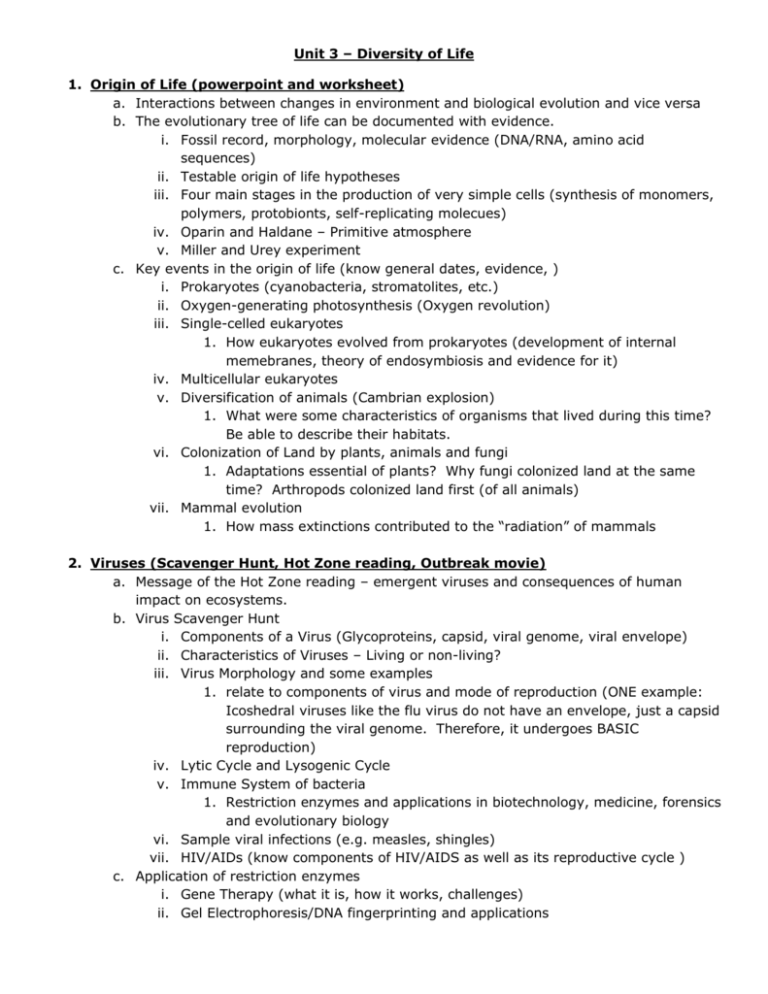
Unit 3 – Diversity of Life 1. Origin of Life (powerpoint and worksheet) a. Interactions between changes in environment and biological evolution and vice versa b. The evolutionary tree of life can be documented with evidence. i. Fossil record, morphology, molecular evidence (DNA/RNA, amino acid sequences) ii. Testable origin of life hypotheses iii. Four main stages in the production of very simple cells (synthesis of monomers, polymers, protobionts, self-replicating molecues) iv. Oparin and Haldane – Primitive atmosphere v. Miller and Urey experiment c. Key events in the origin of life (know general dates, evidence, ) i. Prokaryotes (cyanobacteria, stromatolites, etc.) ii. Oxygen-generating photosynthesis (Oxygen revolution) iii. Single-celled eukaryotes 1. How eukaryotes evolved from prokaryotes (development of internal memebranes, theory of endosymbiosis and evidence for it) iv. Multicellular eukaryotes v. Diversification of animals (Cambrian explosion) 1. What were some characteristics of organisms that lived during this time? Be able to describe their habitats. vi. Colonization of Land by plants, animals and fungi 1. Adaptations essential of plants? Why fungi colonized land at the same time? Arthropods colonized land first (of all animals) vii. Mammal evolution 1. How mass extinctions contributed to the “radiation” of mammals 2. Viruses (Scavenger Hunt, Hot Zone reading, Outbreak movie) a. Message of the Hot Zone reading – emergent viruses and consequences of human impact on ecosystems. b. Virus Scavenger Hunt i. Components of a Virus (Glycoproteins, capsid, viral genome, viral envelope) ii. Characteristics of Viruses – Living or non-living? iii. Virus Morphology and some examples 1. relate to components of virus and mode of reproduction (ONE example: Icoshedral viruses like the flu virus do not have an envelope, just a capsid surrounding the viral genome. Therefore, it undergoes BASIC reproduction) iv. Lytic Cycle and Lysogenic Cycle v. Immune System of bacteria 1. Restriction enzymes and applications in biotechnology, medicine, forensics and evolutionary biology vi. Sample viral infections (e.g. measles, shingles) vii. HIV/AIDs (know components of HIV/AIDS as well as its reproductive cycle ) c. Application of restriction enzymes i. Gene Therapy (what it is, how it works, challenges) ii. Gel Electrophoresis/DNA fingerprinting and applications 3. Prokaryotes – Kingdom Archaebacteria and Eubacteria (worksheet) a. Importance of bacteria for the ecosystem, animals and humans b. Shapes, Cell wall structure (gram +, gram – and pathogenicity) c. Bacterial sources of carbon, sources of energy and dependence on oxygen i. Autotroph, Heterotroph ii. Phototroph, Chemotroph iii. Photoautotroph, Photoheterotroph, Chemoautotroph, Chemoheterotroph iv. Aerobic, Anaerobic and Facultative anaerobic bacteria d. Bacterial genome and cellular organization e. Reproduction i. asexual – binary fission ii. sexual – conjugation (sex pillus, F+ and F- cell) f. Bacterial plasmids i. Antibiotics and how they work ii. Antibiotic resistance in bacteria (relate to plasmids and conjugation) 4. Kingdom Protista (powerpoint – everything) 5. Kingdom Fungi (Colouring worksheet and powerpoint - everything) 6. Kingdom Animalia (powerpoint , group activity, worksheet, Chordata worksheet)
